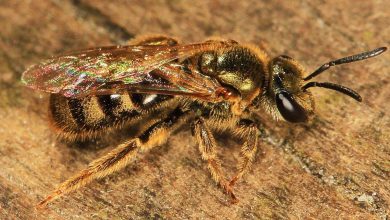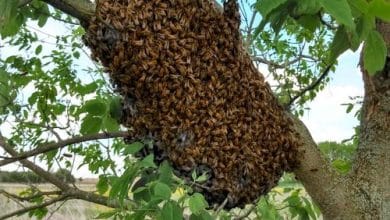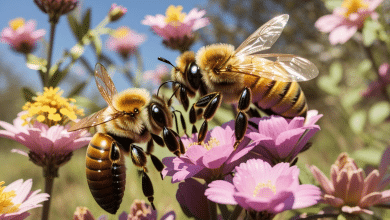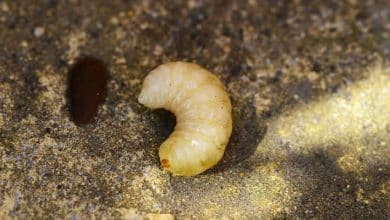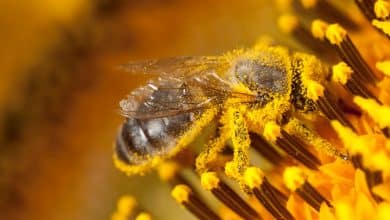Unlocking the Mysteries of Queen Bee Royal Jelly

Queen Bee Royal Jelly is a highly sought-after substance that has captured the attention of many due to its potential health benefits and unique nutritional properties. Made by worker bees, particularly nurse bees, royal jelly is created by their mandibular glands. Understanding the process of royal jelly production is integral to understanding its value and ensuring the highest quality product.
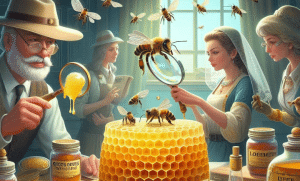
What is Queen Bee Royal Jelly?
Royal jelly is a protein-rich substance produced by nurse bees in their mandibular glands. It is a key component in the development of queen bees and has garnered attention for its potential health benefits. The production of royal jelly begins with worker bees selecting specific larvae to become queens. These larvae are then placed in special elongated “queen cells,” where they are continuously bathed in royal jelly throughout their development. This exclusive diet of royal jelly is what sets queen bees apart, as it allows them to grow larger and live longer than worker bees.
Royal jelly is often referred to as the “queen maker” due to its role in determining the fate of a bee larva. Its unique nutritional composition, including proteins, sugars, vitamins, and minerals, contributes to its potential health and beauty benefits. From boosting the immune system to enhancing skin health, royal jelly is a treasure trove of natural goodness. Understanding the process of royal jelly production is vital in harnessing its full potential and ensuring the highest quality product.
Composition and nutritional content of Queen Bee Royal Jelly
Queen Bee Royal Jelly is not only fascinating in its production process, but its composition and nutritional content also make it a truly remarkable substance. This protein-rich substance contains a variety of valuable nutrients, including essential amino acids, vitamins (such as B vitamins), minerals, and sugars. These components contribute to the potential health benefits of royal jelly.
One of the key components of royal jelly is its protein content, which accounts for approximately 12-15% of its composition. This protein content includes essential and non-essential amino acids, which are building blocks for the body’s proteins. Royal jelly also contains an abundance of carbohydrates, including simple sugars like glucose and fructose, as well as complex sugars like polysaccharides.
In addition to proteins and sugars, royal jelly is a rich source of vitamins and minerals. It contains a range of B vitamins, including thiamine (B1), riboflavin (B2), niacin (B3), pantothenic acid (B5), pyridoxine (B6), and biotin (B7). These vitamins are important for energy production, metabolism, and overall well-being. Royal jelly also contains minerals such as calcium, potassium, phosphorus, and zinc.
The unique combination of proteins, sugars, vitamins, and minerals in royal jelly makes it a potential powerhouse for health and well-being. Its nutritional content may contribute to its various benefits, including immune system support, antioxidant activity, and potential anti-aging effects. Incorporating royal jelly into your diet or skincare routine may provide a natural boost for your overall health and vitality.
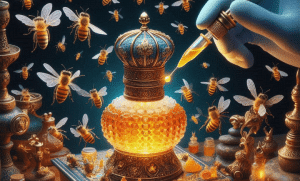
Benefits of Queen Bee Royal Jelly
Queen Bee Royal Jelly offers a multitude of health benefits that make it a sought-after natural supplement. Consuming royal jelly has been linked to enhanced immune function, increased energy levels, and improved mental clarity. It may also have anti-inflammatory properties, supporting joint health and reducing the risk of chronic diseases. Additionally, royal jelly is known to promote skin health, combating signs of aging and improving the overall complexion. The rich nutritional profile of royal jelly contributes to these benefits, providing essential amino acids, vitamins, minerals, and antioxidants. To incorporate the benefits of royal jelly into your routine, consider taking it as a daily supplement or using it in skincare products. It is important to note that while royal jelly has many potential advantages, it may not be suitable for everyone and should be used with caution, especially for individuals with allergies to bee products.
Health benefits of consuming Queen Bee Royal Jelly
Queen Bee Royal Jelly offers numerous health benefits when consumed.
1) Enhanced immune function: Royal jelly has been shown to boost the immune system, helping the body fight against infections and diseases.
2) Increased energy levels: The unique combination of nutrients in royal jelly, including vitamins and amino acids, can increase energy and combat fatigue.
3) Improved mental clarity: Royal jelly has been linked to improved cognitive function, memory, and focus.
4) Anti-inflammatory properties: Royal jelly contains compounds that can reduce inflammation in the body, potentially relieving joint pain and lowering the risk of chronic diseases.
5) Skin health: Royal jelly promotes healthier and younger-looking skin by improving elasticity, reducing wrinkles, and promoting cell regeneration.
To enjoy these benefits, consider incorporating royal jelly into your daily routine through supplements or skincare products. However, it is essential to exercise caution if you have allergies to bee products or any other medical conditions. It’s always recommended to consult with a healthcare professional before starting any new supplement regimen.
Beauty benefits of using Queen Bee Royal Jelly in skincare routines
Queen Bee Royal Jelly offers incredible beauty benefits when incorporated into skincare routines. The nutrient-rich composition of royal jelly works wonders for your skin.
1) Improved skin elasticity: Regular use of royal jelly can enhance the elasticity of your skin, making it appear firmer and more youthful.
2) Reduced wrinkles and fine lines: The nourishing properties of royal jelly help diminish the appearance of wrinkles and fine lines, promoting a smoother complexion.
3) Increased collagen production: Royal jelly stimulates collagen production, which is essential for maintaining skin firmness and preventing sagging.
4) Hydration and moisture retention: The moisturizing properties of royal jelly keep your skin hydrated, preventing dryness and flakiness.
5) Promotes cell regeneration: Royal jelly contains vitamins and antioxidants that help regenerate skin cells, leading to a rejuvenated and radiant complexion.
To incorporate royal jelly into your skincare routine, look for products that contain this powerful ingredient, such as moisturizers, serums, or masks. Apply these products regularly for optimal results, and enjoy the transformative effects of Queen Bee Royal Jelly on your skin.
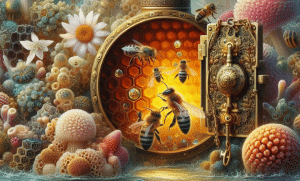
How Queen Bee Royal Jelly is Produced
Producing royal jelly involves a unique process carried out by worker bees in the beehive. To produce royal jelly, worker bees feed a special diet to a select few larvae that have the potential to become queen bees. This diet consists exclusively of royal jelly, which is secreted from the glands of worker bees.
The worker bees carefully select larvae that will become queen bees and deposit royal jelly into the special cells built for their development. They continue to feed the larvae with royal jelly for a period of about three days, after which they switch to a combination of royal jelly and honey.
During this feeding process, the worker bees constantly replenish the royal jelly supply until the queen bee larvae are fully developed and ready to emerge as queen bees. Once the queen bees have matured, they will leave their cells to start their role as leaders of the hive.
The production of royal jelly requires the coordination and specialized efforts of the worker bees in the hive. This fascinating process highlights the importance of royal jelly in the development and survival of queen bees in the bee colony.
Process of harvesting Queen Bee Royal Jelly
The process of harvesting queen bee royal jelly is a delicate and precise task. Beekeepers carefully transfer young larvae destined to become queen bees into specialized artificial queen cups. These cups create a controlled environment for the larvae’s development. Once the larvae are in the queen cups, they are placed in an incubator where the temperature and humidity are carefully regulated. This ensures optimal conditions for the larvae to thrive. After a few days of development, the bees cap the queen cups with royal jelly.
Beekeepers then collect the queen cups and carefully remove the royal jelly using a special extraction method. The harvested royal jelly is immediately stored in a cool and dark place to preserve its quality. This meticulous process ensures that the royal jelly is harvested at the peak of its nutritional value and is ready for consumption or other uses. Harvesting queen bee royal jelly requires expertise and attention to detail to protect the health and productivity of the bee colony.
Role of royal jelly in the life cycle of bees
During the life cycle of bees, royal jelly plays a crucial role. It is the key component of the diet for queen bees, providing them with the necessary nutrients and proteins for their development. Queen larvae are exclusively fed with royal jelly, which triggers a cascade of physiological changes that allow them to become sexually mature and develop larger reproductive organs.
This specialized diet also influences their size, lifespan, and ability to lay eggs. The abundance of royal jelly in the diet of queen bees sets them apart from worker bees, who consume a mixture of pollen and nectar. This distinct diet contributes to the queen bee’s ability to become the leader of the colony and produce offspring. The role of royal jelly in the life cycle of bees is therefore essential for maintaining the reproductive success and overall productivity of the hive.
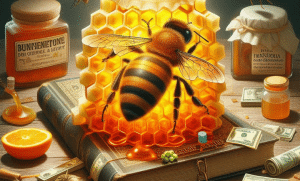
Potential Side Effects and Allergies
When consuming queen bee royal jelly, there is the potential for some side effects. It’s important to be aware of these risks and take appropriate precautions.
- Allergic Reactions: Some individuals may have allergies to bee products, including royal jelly. If you have a known allergy to bee stings or other bee products, it’s recommended to avoid consuming royal jelly. Allergic reactions can range from mild symptoms like itching and hives to more severe reactions like difficulty breathing and anaphylaxis. It’s crucial to seek medical attention if you experience any allergic symptoms after consuming royal jelly.
- Digestive Issues: Royal jelly is a rich and potent substance, and some people may experience digestive discomfort after consuming it. This can include symptoms like bloating, gas, diarrhea, or upset stomach. If you have a sensitive digestive system, it’s advisable to start with a small amount of royal jelly and monitor your body’s response. If you experience persistent digestive problems, it’s best to discontinue its use and consult with a healthcare professional.
- Medication Interactions: Royal jelly may interact with certain medications, including blood thinners and drugs for high blood pressure. If you are taking any medications, it’s essential to talk to your healthcare provider before adding royal jelly to your regimen to avoid any potential interactions.
In summary, while queen bee royal jelly has many potential health benefits, it’s important to be aware of the potential side effects and allergies. If you have any concerns or experience any adverse reactions, it’s best to consult with a healthcare professional.
Possible side effects of consuming Queen Bee Royal Jelly
Possible side effects of consuming Queen Bee Royal Jelly include allergic reactions, digestive issues, and potential medication interactions.
For individuals with known allergies to bee products, such as bee stings, it is recommended to avoid consuming royal jelly to prevent allergic reactions. Symptoms can range from mild itching and hives to severe reactions like difficulty breathing and anaphylaxis. Medical attention should be sought immediately if any allergic symptoms occur after consuming royal jelly.
Some people may experience digestive discomfort after consuming royal jelly, including bloating, gas, diarrhea, or upset stomach. Those with sensitive digestive systems should start with a small amount of royal jelly and monitor their body’s response. If persistent digestive problems occur, it is advised to discontinue use and consult a healthcare professional.
Royal jelly may also interact with certain medications, particularly blood thinners and drugs for high blood pressure. It is crucial to consult with a healthcare provider before adding royal jelly to a medication regimen to avoid any potential interactions.
In summary, while Queen Bee Royal Jelly offers many potential health benefits, it is important to be aware of the potential side effects and allergies. If any concerns or adverse reactions occur, it is best to consult a healthcare professional.
Allergic reactions and precautions when using Queen Bee Royal Jelly
When using Queen Bee Royal Jelly, it is important to be aware of potential allergic reactions and take necessary precautions. Some individuals may experience allergic reactions to royal jelly, particularly those with asthma or allergies. Symptoms can range from mild skin irritation and rash to more severe reactions like difficulty breathing and anaphylaxis. If you have a known allergy to bee products, such as bee stings, it is recommended to avoid consuming or using royal jelly.
If you are using royal jelly topically on the skin, it is generally considered safe for up to 6 months. However, it may cause skin irritation and rash in some people. It is advisable to perform a patch test before using royal jelly on a larger area of the skin and discontinue use if any adverse reactions occur.
To ensure your safety, it is always best to consult with a healthcare professional before incorporating royal jelly into your diet or skincare routine. They can provide guidance based on your individual health and potential allergies or interactions with medications.
In summary, being aware of potential allergic reactions and taking necessary precautions when using Queen Bee Royal Jelly is essential for your safety and well-being.
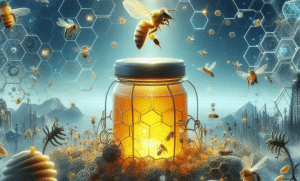
Best Practices for Incorporating Queen Bee Royal Jelly
To fully maximize the benefits of Queen Bee Royal Jelly, here are some best practices for incorporating it into your routine:
- Start with a small dosage: Begin with a low quantity of royal jelly and gradually increase the dosage over time. This will help you gauge your tolerance and minimize the risk of any adverse reactions.
- Consult a healthcare professional: It is always advisable to consult with a healthcare professional before incorporating royal jelly into your diet or skincare routine, especially if you have any existing health conditions or are taking medications.
- Follow recommended usage guidelines: Whether you are consuming royal jelly as a dietary supplement or using it topically on your skin, it is important to follow the recommended usage guidelines provided by the manufacturer. This will ensure that you are using it safely and effectively.
- Perform a patch test: If you plan to use royal jelly on your skin, it is recommended to perform a patch test on a small area of your skin before applying it to a larger area. This will help you identify any potential allergic reactions or skin sensitivities.
- Store properly: To maintain the freshness and potency of royal jelly, store it in a cool and dry place away from direct sunlight. Follow the storage instructions provided on the product packaging to ensure its effectiveness.
By following these best practices, you can safely incorporate Queen Bee Royal Jelly into your routine and reap its many benefits. Remember to listen to your body and discontinue use if you experience any adverse reactions.
Ways to incorporate Queen Bee Royal Jelly into your diet
To incorporate Queen Bee Royal Jelly into your diet, here are some practical ways to do so:
- Smoothies: Add a teaspoon of royal jelly to your favorite smoothie recipe for a boost of nutrients and energy.
- Food Pairings: Spread royal jelly on toast or mix it into yogurt for a delicious and nutritious breakfast.
- Salad Dressings: Create a homemade salad dressing by combining royal jelly with olive oil, lemon juice, and your choice of herbs and spices.
- Tea or Honey Mixtures: Stir royal jelly into a cup of warm tea or mix it with honey for a soothing and revitalizing beverage.
- Supplements: Take royal jelly in capsule or tablet form as a convenient way to incorporate it into your daily routine.
Remember to start with a small dosage and gradually increase it, consulting with a healthcare professional if needed. By incorporating Queen Bee Royal Jelly into your diet, you can enjoy its numerous health benefits.
Tips for using Queen Bee Royal Jelly in skincare products
When it comes to incorporating Queen Bee Royal Jelly into your skincare routine, here are some helpful tips:
- Patch test: Before applying royal jelly directly to your skin, do a patch test to check for any allergic reactions or sensitivity.
- Mix with carrier oils: To make your own royal jelly skincare products, mix a small amount of royal jelly with carrier oils like jojoba or almond oil. This can be used as a moisturizer or added to face masks and serums.
- DIY face mask: Create a nourishing face mask by combining royal jelly with ingredients like honey, avocado, or yogurt. Apply the mask to your face, leave it on for 15-20 minutes, and then rinse off for smoother and more radiant skin.
- Eye cream: Lightly dab a small amount of royal jelly around the delicate skin under your eyes to reduce puffiness and improve the appearance of fine lines.
- Hair mask: Mix royal jelly with a hair conditioner or your favorite natural oils (such as argan or coconut oil) and apply it to your hair for a deep conditioning treatment. Leave it on for 20-30 minutes before rinsing.
By following these tips, you can harness the potential benefits of Queen Bee Royal Jelly for your skincare routine and unlock its natural beauty-enhancing properties.
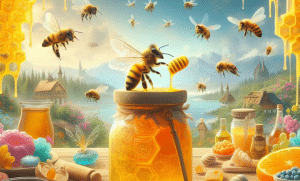
In conclusion, branding plays a crucial role in setting your business apart from the competition and creating a unique identity. Here are some key takeaways to help you effectively brand your business:
- Define your brand identity: Clearly articulate your company’s values, mission, and vision. This will serve as the foundation for your brand.
- Know your target audience: Understand the needs, preferences, and demographics of your target audience. Tailor your branding efforts to resonate with them.
- Create a compelling brand story: Craft a narrative that highlights your brand’s history, values, and unique selling proposition. This will help build an emotional connection with your audience.
- Consistency is key: Maintain consistency across all branding elements, including your logo, color palette, typography, and tone of voice. This will establish brand recognition and trust.
- Be authentic: Stay true to your brand’s values and promise. Authenticity is valued by consumers and can help differentiate your brand.
- Engage with your audience: Actively engage with your customers through social media, email marketing, and customer feedback. This will strengthen brand loyalty and create brand advocates.
By implementing these branding strategies, you can position your business for success and stand out in a crowded marketplace. Remember, branding is an ongoing process, so continuously evaluate and refine your brand strategy to stay relevant and impactful.
Summary of the key points about Queen Bee Royal Jelly
Summary of the key points about Queen Bee Royal Jelly:
- Queen Bee Royal Jelly is a substance produced by worker bees for the sole purpose of feeding the queen bee throughout her life.
- It is rich in nutrients such as proteins, vitamins, minerals, and essential fatty acids, making it highly beneficial for overall health.
- Consuming Queen Bee Royal Jelly can boost the immune system, enhance fertility, and improve cognitive function.
- It has antimicrobial and anti-inflammatory properties, making it suitable for use in skincare routines to promote healthy skin.
- The production of Queen Bee Royal Jelly involves worker bees feeding larvae an exclusive diet of pure royal jelly for the first few days of their lives.
- Queen Bee Royal Jelly plays a vital role in the development and lifespan of the queen bee, as it enables her to grow larger, live longer, and have reproductive capabilities.
- While Queen Bee Royal Jelly has numerous benefits, it is important to be aware of potential side effects and allergies, and to exercise caution when consuming or using it.
- Incorporating Queen Bee Royal Jelly into your diet or skincare routine can be done through various methods, such as adding it to smoothies or using it as an ingredient in homemade beauty products.
Final thoughts and recommendations
In conclusion, Queen Bee Royal Jelly is a remarkable substance with numerous benefits for both health and beauty.
- Its rich nutritional composition makes it a valuable addition to any diet, providing essential nutrients and boosting the immune system.
- When used in skincare routines, Queen Bee Royal Jelly can help promote healthy skin, thanks to its antimicrobial and anti-inflammatory properties.
- However, it is important to exercise caution when consuming or using Queen Bee Royal Jelly, as some individuals may experience allergies or side effects.
- Before incorporating it into your routine, consult with a healthcare professional to ensure its safety and suitability for your specific needs.
- To incorporate Queen Bee Royal Jelly into your diet, consider adding it to smoothies, oatmeal, or yogurts for a nutrient-packed boost.
- When using it in skincare, look for products that contain high-quality Queen Bee Royal Jelly or experiment with making your own homemade beauty concoctions.
- Finally, always remember to source Queen Bee Royal Jelly from reputable suppliers to ensure its quality and authenticity.
- With its impressive benefits, Queen Bee Royal Jelly may just be the secret ingredient to enhancing your overall well-being and beauty regimen.
- Give it a try and reap the rewards of nature’s royal gift.
What does royal jelly do for queen bees?
What does royal jelly do for queen bees? Royal jelly plays a crucial role in the development and sustenance of queen bees. When a queen bee larva is chosen, it is fed a continuous diet of royal jelly by worker bees. This nutrient-rich substance stimulates the growth of the queen’s reproductive organs, allowing her to become sexually mature and lay eggs. Royal jelly also affects the queen’s physical appearance, resulting in a larger size, longer lifespan, and increased fertility compared to worker bees.
The composition of royal jelly, including proteins, vitamins, minerals, fatty acids, and antioxidants, contributes to these remarkable effects. Additionally, royal jelly contains compounds that regulate gene expression and hormonal activity, further influencing the development of the queen bee.
The role of royal jelly in the life cycle of bees highlights its potential benefits for humans as well. While research on the direct effects of royal jelly in humans is limited, it is believed to possess various health-promoting properties. These include antioxidant, anti-inflammatory, immunomodulatory, and antimicrobial effects.
While more research is needed to fully understand the extent of royal jelly’s benefits in humans, its impressive impact on queen bees showcases its extraordinary potential.
What are the benefits of royal jelly?
Royal jelly offers numerous benefits due to its rich nutritional profile. Here are some of the key benefits of consuming royal jelly:
- Boosts immune health: Royal jelly contains antioxidants and antimicrobial compounds that can enhance the immune system, protecting against infections and illnesses.
- Supports hormonal balance: Royal jelly contains natural hormones that can help regulate hormonal imbalances, particularly in women experiencing menopause symptoms.
- Improves skin health: The antioxidant properties of royal jelly can promote collagen production and reduce inflammation, leading to improved skin elasticity and a more youthful complexion.
- Enhances brain function: Royal jelly contains nutrients like acetylcholine, which supports brain health, memory, and cognitive function.
- Increases energy levels: The vitamins, minerals, and proteins in royal jelly can provide a natural energy boost, combating fatigue and increasing vitality.
- Supports reproductive health: Royal jelly has been shown to improve fertility in both men and women by enhancing sperm quality and regulating menstrual cycles.
To enjoy these benefits, it is recommended to include royal jelly as a regular part of your diet or take it as a supplement. Always consult with a healthcare professional before making any changes to your diet or supplementation routine.
How long are queen bees fed royal jelly?
During the development of queen bees, they are fed royal jelly for an extended period compared to worker bees. Queen larvae are fed exclusively on royal jelly for the first three days of their larval stage, while worker larvae are fed a combination of royal jelly, honey, and pollen.
The feeding of royal jelly continues throughout the entire lifespan of queen bees, as it is essential for their growth, fertility, and overall function as the reproductive leader of the hive. This continuous supply of royal jelly helps the queen maintain her larger size, enhanced reproductive capabilities, and extended lifespan compared to worker bees.
The consumption of royal jelly triggers specific genetic alterations in the queen bee, leading to her development into a sexually mature and long-lived individual. The exclusive and prolonged feeding of royal jelly to queen bees is crucial for their remarkable physiological and reproductive attributes, allowing them to fulfill their role as the mother and leader of the hive.
Can humans eat bee royal jelly?
Can humans eat bee royal jelly? Yes, humans can consume bee royal jelly and it is available as a nutritional supplement. It is important to note that bee royal jelly is not vegan as it is produced by bees. However, it is a popular health supplement due to its potential benefits.
Before incorporating bee royal jelly into your diet, it is advisable to consult with a healthcare professional, especially if you have any existing medical conditions or are taking medication. They can provide guidance on dosage and any potential interactions with other supplements or medications. Additionally, it is recommended to start with a small amount and gradually increase the dosage to monitor your body’s response.
To consume bee royal jelly, it is commonly available in capsule or liquid form. It can be taken directly or mixed with food or beverages. It is important to follow the manufacturer’s instructions for proper dosage.
Overall, bee royal jelly can be consumed by humans as a nutritional supplement, but it is always best to consult with a healthcare professional before adding it to your diet.
As we close the chapter on our deep dive into the enigmatic world of Queen Bee Royal Jelly, it’s evident that this substance is more than just a topic of ancient folklore. The research suggests that its properties may indeed offer substantial health benefits, potentially uplifting our own vitality and wellness. Thank you for accompanying us on this exploratory journey into the heart of the hive.
Remember, nature’s remedies are as fascinating as they are varied, and this is just one piece of the puzzle. We’re eager to continue unraveling the mysteries with you – so stay tuned for more insights and remember, the keys to health might just be hidden in the wisdom of the bees. Keep buzzing with curiosity, and if you’ve had personal experiences with Royal Jelly, we’d love to hear your stories and insights. Share your thoughts below, and be part of the ongoing conversation about the powerful benefits of ancient natural remedies.



